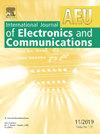Adaptive network-wide superspreader detection using programmable switches
IF 3.2
3区 计算机科学
Q2 ENGINEERING, ELECTRICAL & ELECTRONIC
Aeu-International Journal of Electronics and Communications
Pub Date : 2025-09-18
DOI:10.1016/j.aeue.2025.156041
引用次数: 0
Abstract
Superspreaders, i.e., hosts exhibiting an abnormal number of distinct connections in large-scale networks, are key indicators of security threats such as worm propagation, spam floods, and scanning attacks. Efficient network-wide superspreader detection requires effective distinct counts with tight memory and performance constraints. Existing sketching techniques in the literature typically allocate fixed memory per flow and often neglect the drastic cardinality imbalance between high- and low-cardinality flows. Most existing methods are restricted to detecting at a single point only. It often overlooks the network-wide superspreader. This paper introduces SpreadTrace, a novel approach leveraging programmable P4 switches for efficient superspreader detection. SpreadTrace combines a Bloom filter with lightweight counters for duplicate filtering, a multi-stage main table with sentinel-based eviction, and a probabilistic promotion mechanism that guarantees the retention of large-cardinality flows while efficiently handling low-cardinality flows. We further extend SpreadTrace with a network-wide detection mechanism based on dynamic thresholding at the controller, enabling coordinated detection across multiple switches in real time. The paper provides a theoretical analysis for the correctness guarantees and explicit error bounds for distinct counting, table utilization, auxiliary collisions, and promotion probability. Experiments on real traffic traces demonstrate that SpreadTrace achieves a precision of more than 95% with less than 250 KB of memory, and reduces the estimation error by a factor of 5–10 compared to state-of-the-art solutions, while operating at line rate on programmable switches.
使用可编程开关的自适应全网超扩展器检测
超级传播者,即在大规模网络中表现出异常数量的不同连接的主机,是蠕虫传播、垃圾邮件泛滥和扫描攻击等安全威胁的关键指标。高效的全网超传播器检测需要在严格的内存和性能约束下进行有效的不同计数。文献中现有的草图绘制技术通常为每个流分配固定的内存,并且经常忽略高基数流和低基数流之间的严重基数不平衡。大多数现有的方法仅限于在单点检测。它常常忽略了网络范围内的超级传播者。本文介绍了一种利用可编程P4开关进行高效超扩散检测的新方法——SpreadTrace。SpreadTrace结合了Bloom过滤器和用于重复过滤的轻量级计数器,一个带有基于哨兵的驱逐的多阶段主表,以及一个概率提升机制,该机制保证保留大基数流,同时有效地处理低基数流。我们进一步扩展了SpreadTrace,采用基于控制器动态阈值的全网检测机制,实现了跨多个交换机的实时协调检测。本文对不同计数、表利用率、辅助碰撞和提升概率的正确性保证和显式误差范围进行了理论分析。对真实流量轨迹的实验表明,与最先进的解决方案相比,SpreadTrace在小于250 KB内存的情况下实现了95%以上的精度,并将估计误差降低了5 - 10倍,同时在可编程交换机上以线速率运行。
本文章由计算机程序翻译,如有差异,请以英文原文为准。
求助全文
约1分钟内获得全文
求助全文
来源期刊
CiteScore
6.90
自引率
18.80%
发文量
292
审稿时长
4.9 months
期刊介绍:
AEÜ is an international scientific journal which publishes both original works and invited tutorials. The journal''s scope covers all aspects of theory and design of circuits, systems and devices for electronics, signal processing, and communication, including:
signal and system theory, digital signal processing
network theory and circuit design
information theory, communication theory and techniques, modulation, source and channel coding
switching theory and techniques, communication protocols
optical communications
microwave theory and techniques, radar, sonar
antennas, wave propagation
AEÜ publishes full papers and letters with very short turn around time but a high standard review process. Review cycles are typically finished within twelve weeks by application of modern electronic communication facilities.

 求助内容:
求助内容: 应助结果提醒方式:
应助结果提醒方式:


